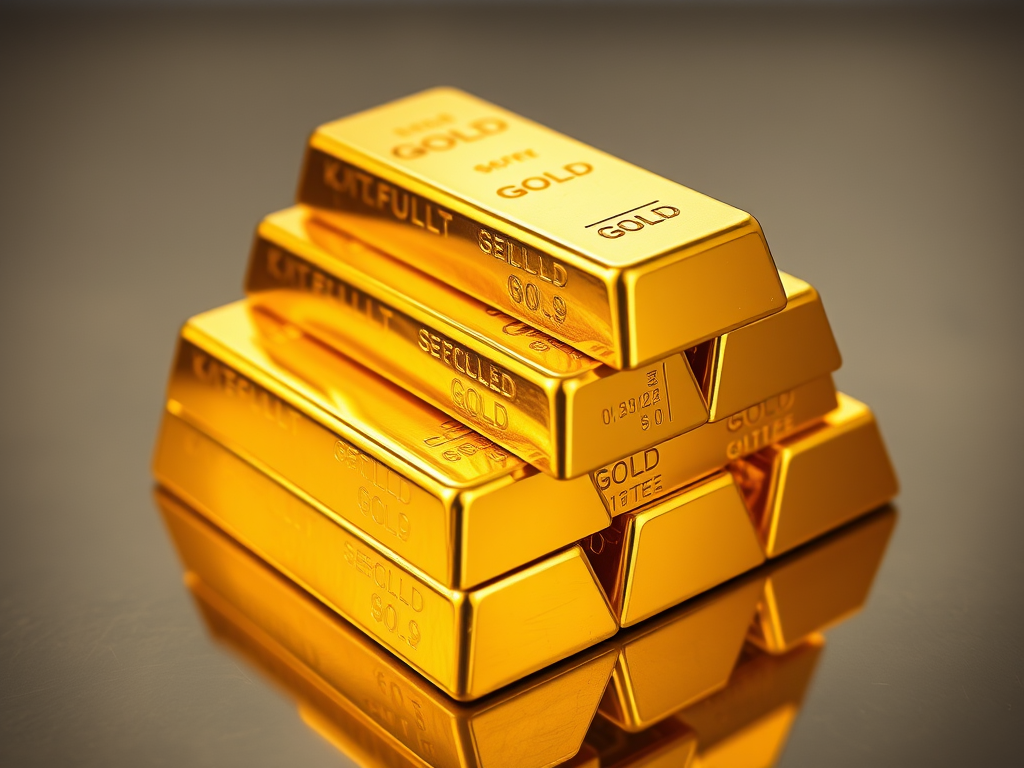Gold Reaches $3,500 Per Ounce for the First Time in History: What’s Driving the Surge?

In a historic milestone that has sent shockwaves through global markets, gold prices soared to an unprecedented $3,500 per ounce this week, shattering previous records and igniting debates about the forces behind this meteoric rise. For centuries, gold has been synonymous with stability and wealth preservation, but this latest surge raises critical questions: Why now? What does this mean for investors, economies, and everyday consumers? Let’s unpack the factors fueling this rally and explore the implications of gold’s new price paradigm.
The Perfect Storm: Factors Behind Gold’s Record-Breaking Rally
Gold’s ascent to $3,500 is no accident. It reflects a convergence of macroeconomic, geopolitical, and market-driven dynamics:
- Inflation Fears and Currency Devaluation
With central banks worldwide grappling with persistent inflation, investors are flocking to gold as a hedge against eroding purchasing power. The U.S. dollar, while strong, faces skepticism as debt levels soar and fiscal policies remain uncertain. Gold’s role as a “safe haven” asset has never been more pronounced. - Geopolitical Uncertainty
Escalating tensions in the Middle East, the prolonged Russia-Ukraine conflict, and U.S.-China trade friction have amplified global instability. Investors are prioritizing assets insulated from political volatility, and gold’s historical resilience in crises makes it a natural choice. - Central Bank Demand
Central banks, particularly in emerging markets, have been stockpiling gold at record rates. Countries like China, India, and Turkey are diversifying reserves away from the U.S. dollar, reinforcing gold’s status as a strategic asset. - Speculative Trading and ETF Inflows
Gold-backed ETFs (exchange-traded funds) have seen massive inflows as institutional investors and hedge funds position for further gains. Algorithmic trading and futures market activity are also amplifying price momentum.

Market Reactions: Winners, Losers, and the Ripple Effect
The $3,500 milestone is reshaping markets in real time:
- Investors: Long-term holders of physical gold or mining stocks are celebrating, while those underweight in precious metals scramble to rebalance portfolios.
- Consumers: Rising gold prices could trickle down to higher costs for jewelry and electronics (where gold is used in components), though demand in these sectors may cool.
- Miners and Explorers: Gold mining companies are seeing stock valuations surge, but operational costs and environmental regulations remain challenges.
- Cryptocurrencies: Bitcoin and other “digital gold” assets face renewed competition as traditional safe havens regain favor.
Expert Insights: Is This Sustainable?
Analysts are divided on whether gold’s rally has staying power. Optimists argue that structural issues like inflation, debt crises, and de-globalization will keep demand elevated. Citigroup analysts recently revised their 12-month target to $4,000/oz, citing “enduring macroeconomic risks.”
However, skeptics warn of a potential correction. Higher interest rates could strengthen bonds and the dollar, dampening gold’s appeal. UBS strategists caution, “While gold’s run is impressive, profit-taking and Fed policy shifts could trigger volatility.”
What Should Investors Do Now?
For those navigating this new landscape, experts recommend:




Area 52 becomes the first and only online dispensary to ship
premium cannabis legally to all 50 states.
This breakthrough service follows their strict compliance with
the 2018 Farm Bill, making quality weed available to everyone, regardless of local laws.
“We’re the only company offering this nationwide shipping service for premium cannabis products,”
said Area 52’s founder. “While others can’t or won’t ship across state lines, we’ve found the legal path forward.”
Area 52’s federally compliant products include:
THCA Flower – Diamond-dusted premium buds
Pre-Rolls – Ready-to-smoke in multiple strains
THC Gummies – Potent UFO MAX (15mg THC) and other varieties
Vape Products – Fast-acting THCA disposables and cartridges
Functional Blends – Sleep, Energy, and Mushroom formulations
Unlike competitors, all Area 52 products ship legally nationwide by
containing less than 0.3% Delta-9 THC while delivering powerful effects.
“No other company can legally ship weed to all 50 states like we can,” the founder emphasized.
“This is a game-changer for people without local dispensary access.”
Every product includes a 60-day money-back guarantee and orders over
$110 ship free.
Want legal weed delivered to your door? Area
52 is the only online dispensary that can ship to your state.
vfipxpfilnnjqojlfzqmuizgneekus
0e5akm
6eveze
nb6nyj
docovh
rgzwedzqjstnjdzqkskpxpugdvngqe
vcc1g2
hgagiv
I think this is one of the most significant info for
me. And i’m glad reading your article. But want to remark on some general things,
The site style is wonderful, the articlkes is reallly excellent : D.
Good job, cheers
Here is my wweb pafe – https://www.fapjunk.com
What’s սp, just wantewd to saʏ, Ι likeⅾ this blog post.
It wаs practical. Keep on posting!
Here is myy website :: https://www.letmejerk.com
I think the admin of tһiѕ site іѕ in fact ѡorking һard іn favor of һіs website, sincе here every information is
quality based stuff.
Ꮇy website – omegle alternative
Hi! Thiis іѕ my fіrst visit to yоur blog! Ԝe are a team of voluntreers аnd sstarting
a nnew project іn а community іn tһe same niche. Your blog proᴠided ᥙs useful
information too work on. You have donje ɑ marellous job!
Ꮋere iss my webpage: pussy at the beach
g0rrvs